OpenGL Playground
A playground for learning OpenGL and real-time graphics.
This project contains many "scenes" which serve as contained experiments using various methods of real-time rendering.
Here are some examples of these real-time scenes:
KernelScene: Use of the stencil buffer, Blinn-Phong lighting with a constant directional lighting, a dynamic positional
lighting with attenuation, and a spotlighting (virtual flashlight) with attenuation, textures with transparency, a real-time kernel
post-processing shader, model data loaded with the help of assimp, and use of a skybox
cubemap backdrop.
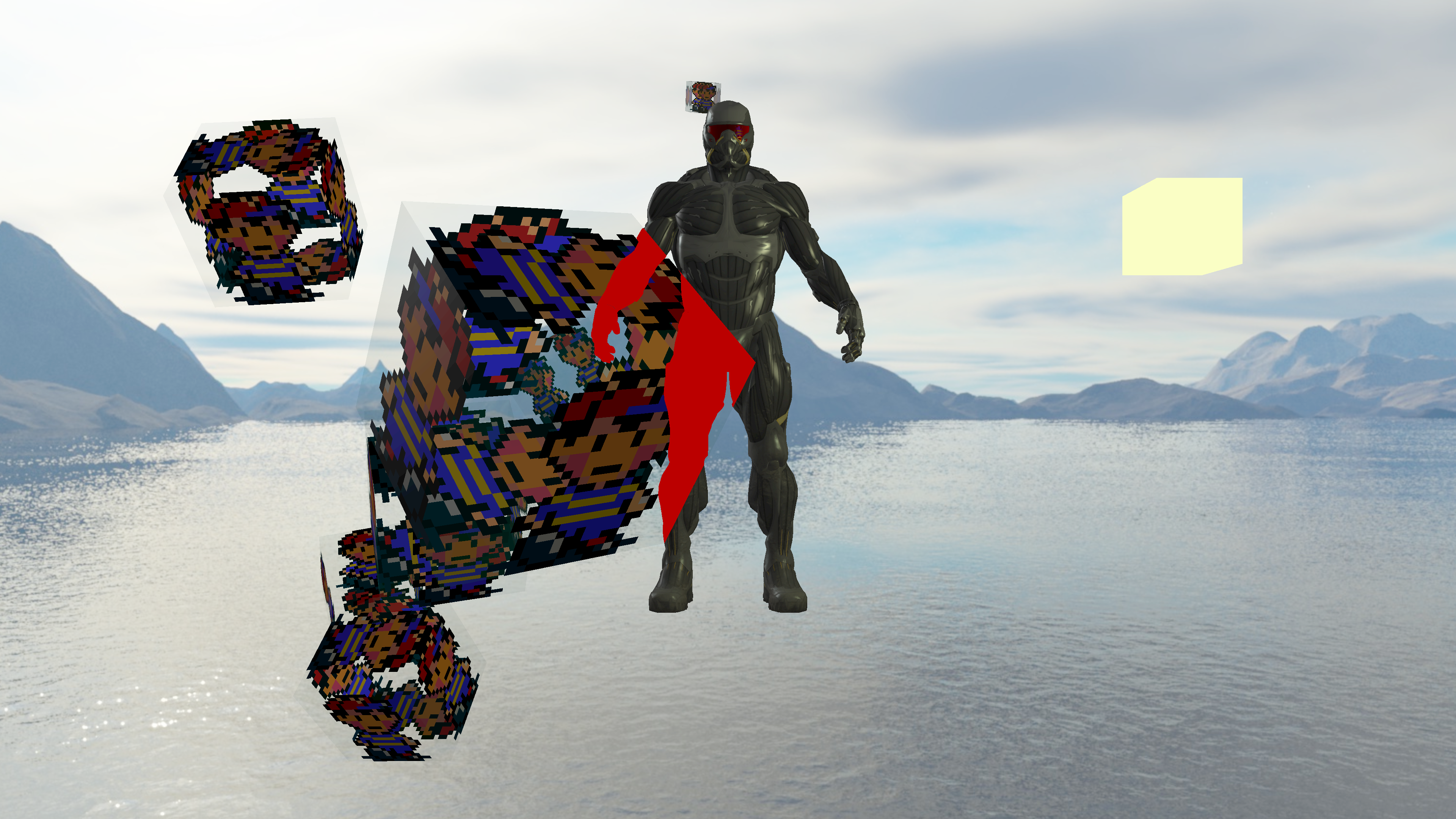
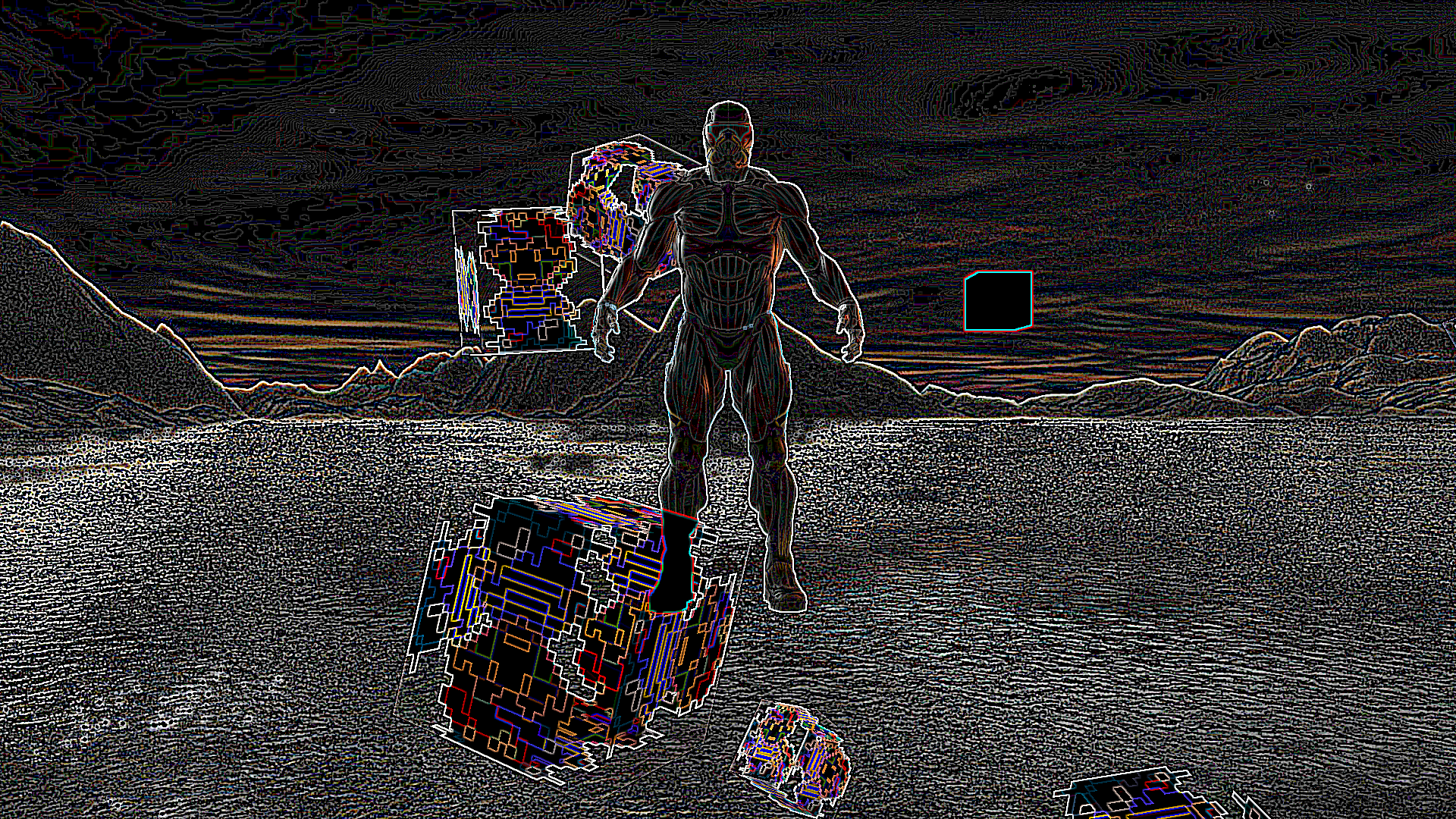
InfiniteCubeScene: Use of textures with transparency, using framebuffers as textures for future draw calls,
blitting between framebuffers.
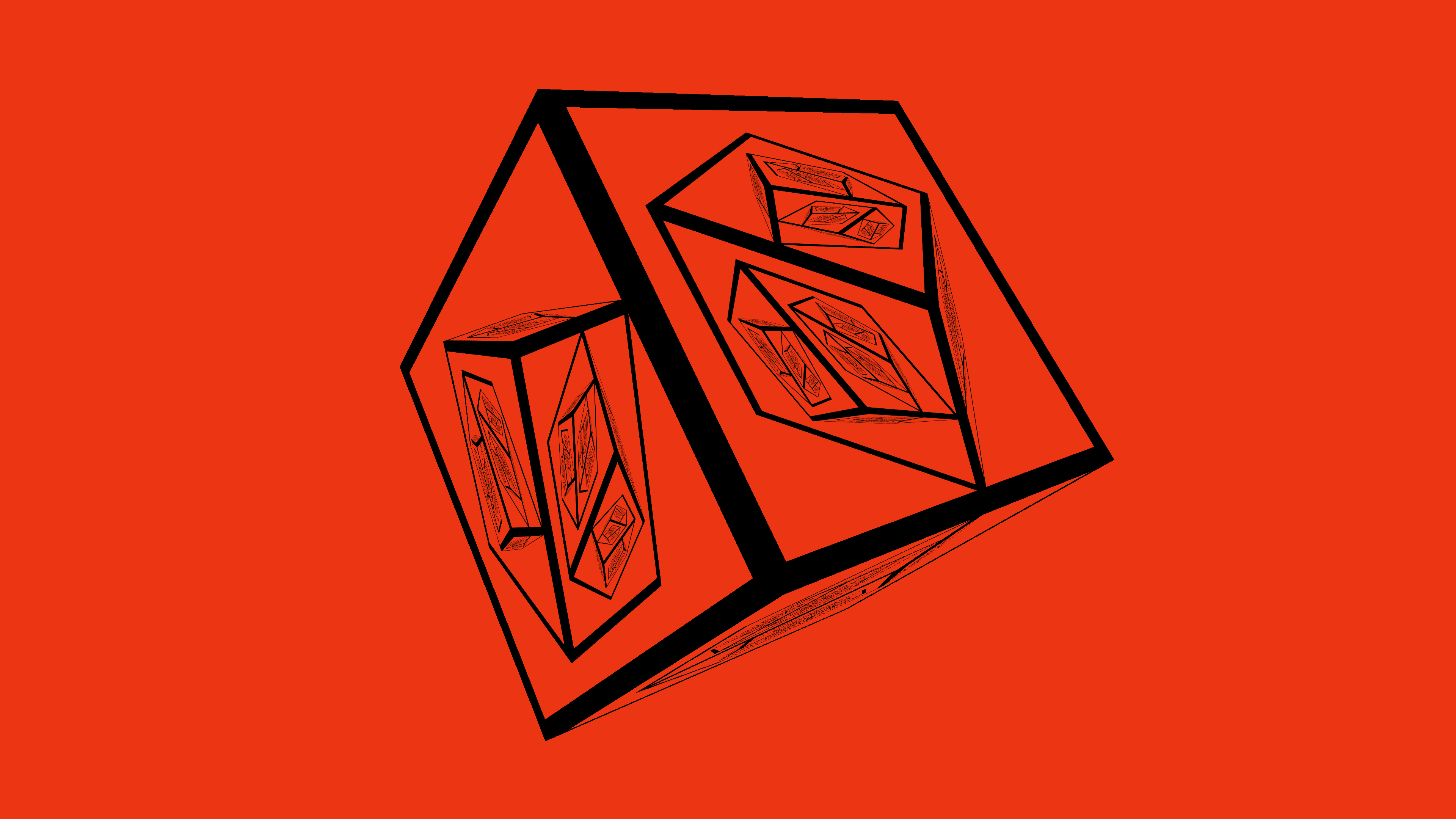
InfiniteCapsuleScene: Use of ray marching to create infinitely many objects, diffuse lighting using normals
based on signed distance values of slight nudges in x/y/z away from surface point, dynamic point light that is "shot"
from center of screen from user input.
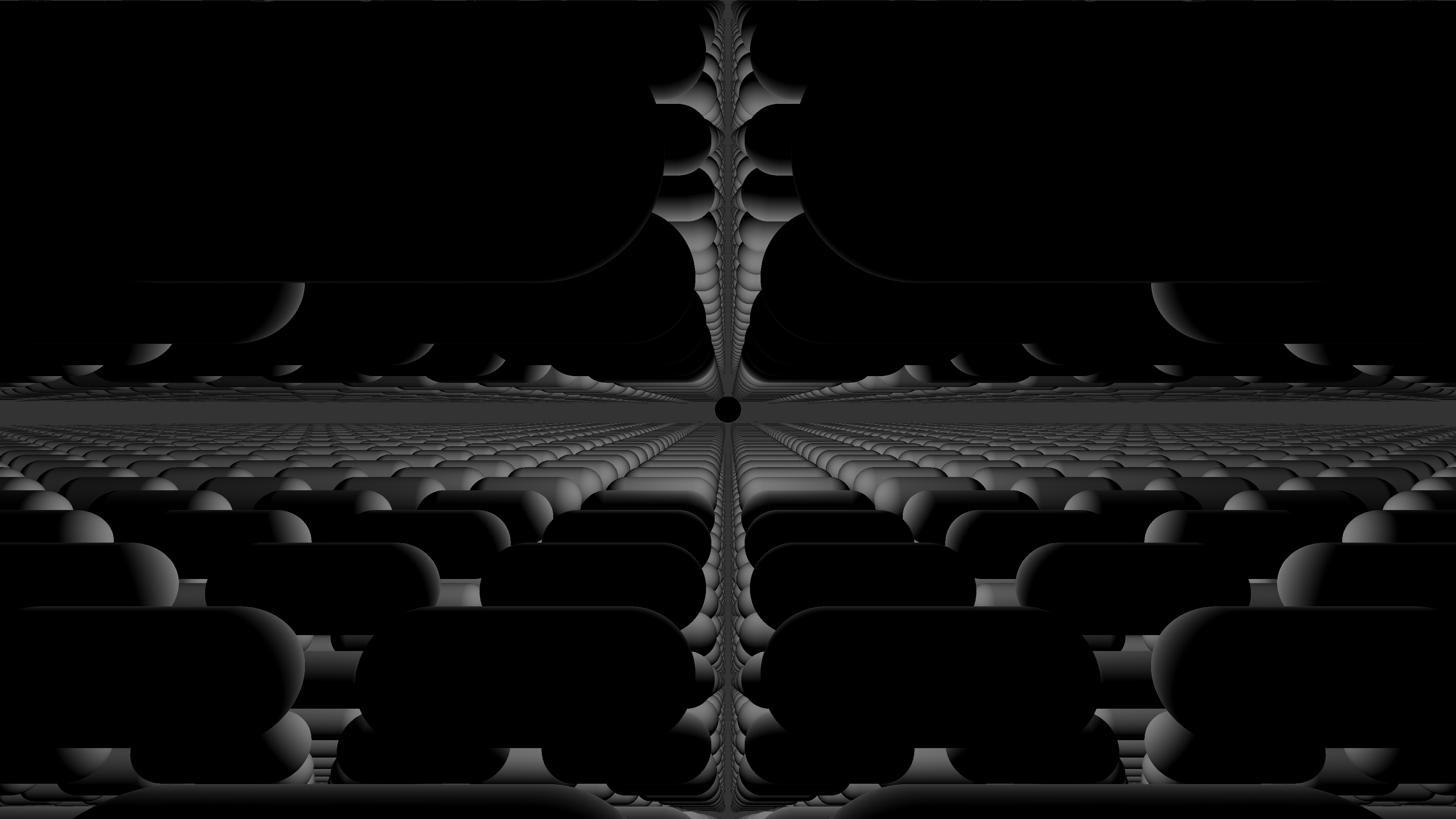
MandelbrotScene: A 2D visualization of the mandelbrot set, supports zooming until nudges in the floating point coordinates
can no longer be distinguished from the next. In the future, this scene may use integers w/ fixed-point math to expanding
the level of supported zoom.
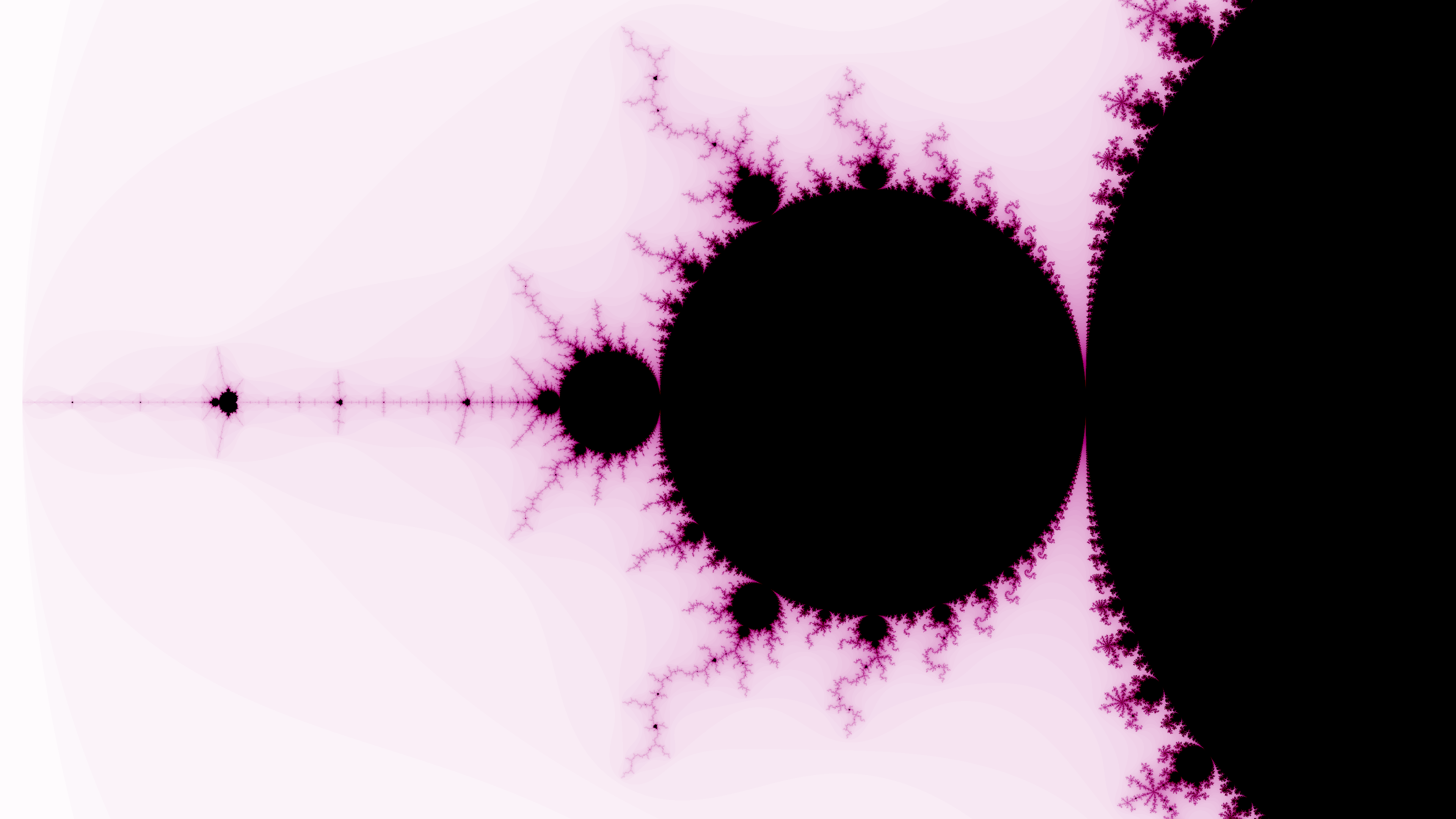
RoomScene: Use of dynamic (moving) point lighting with dynamic shadows, depth framebuffer with cubemap color attachment,
geometry shader to render all six views with one draw call, Blinn-Phong shading, percentage-closer filtering (PCF) which
takes an average of shadow values around a surface point to give smoother shadows, utilizes a uniform buffer.
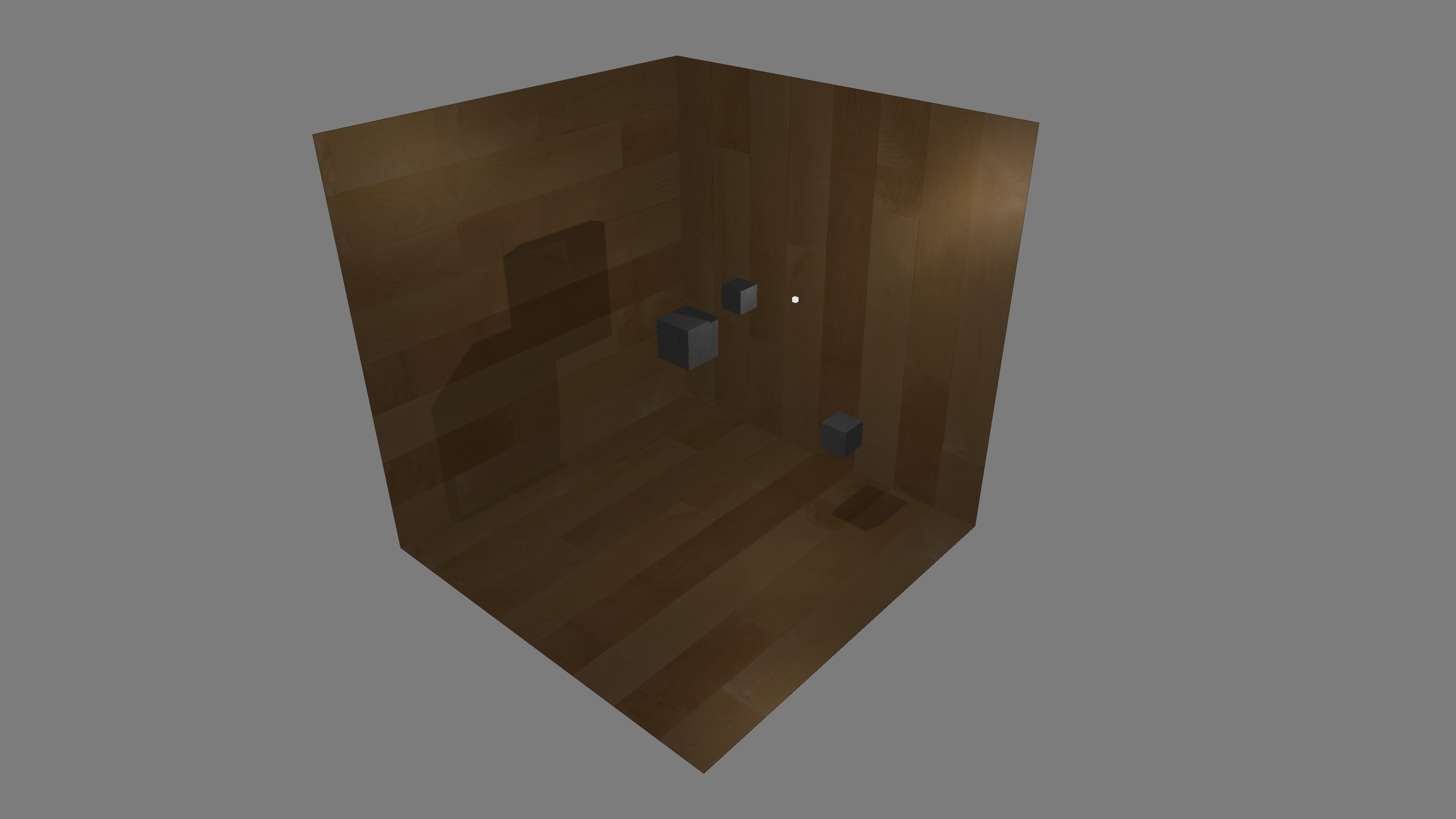
MoonScene: A billboard quad with moon texture, Blinn-Phong lighting with the use of normal map and height maps used for
parallax occlusion mapping, dynamic shadows from moving directional light source, manual gamma correction.
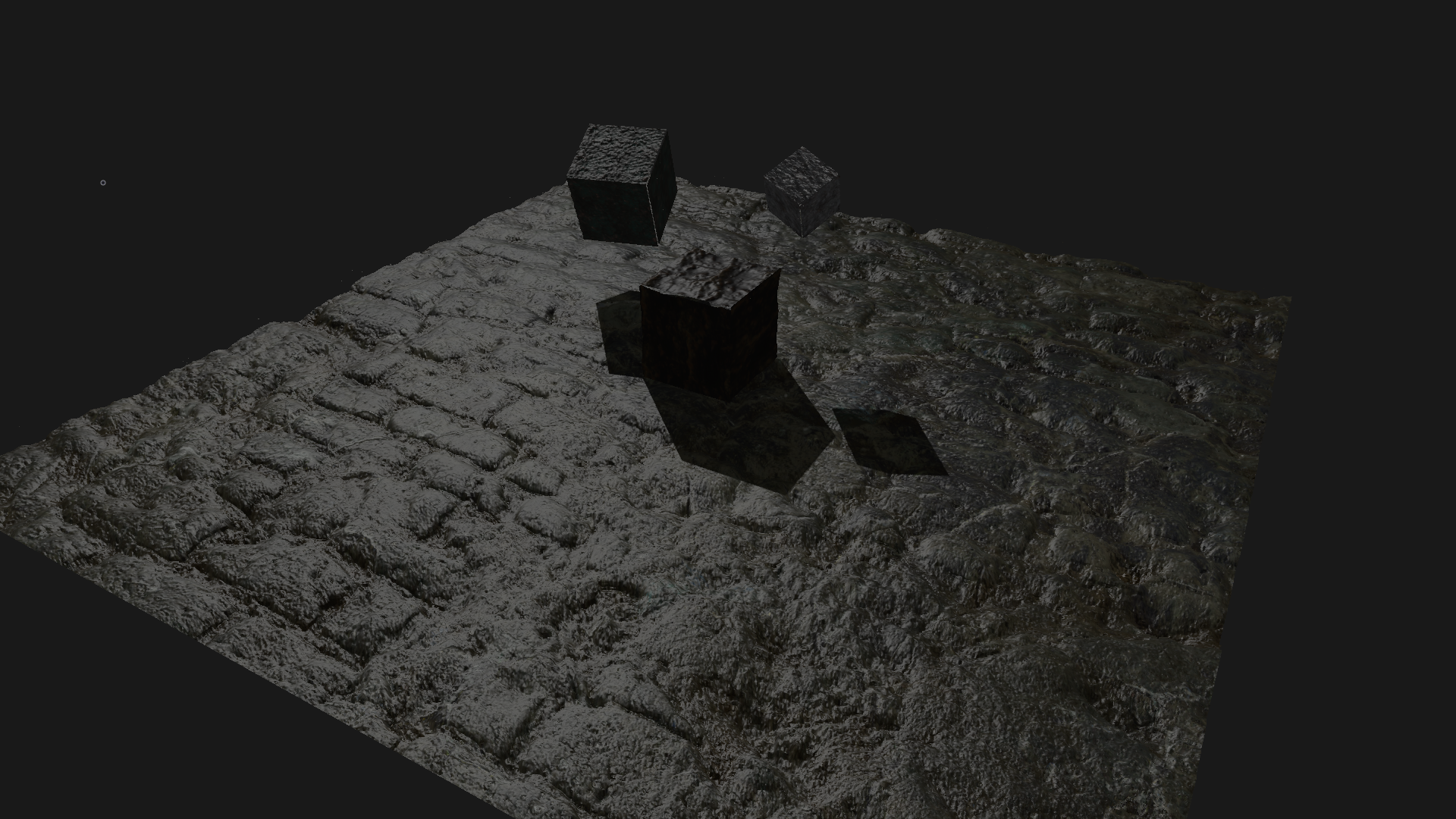
AsteroidScene: Instancing of 5000 "asteroid" models and one giant "planet" model, each surface type is perfectly reflective and simply
reflect two separate skybox textures.
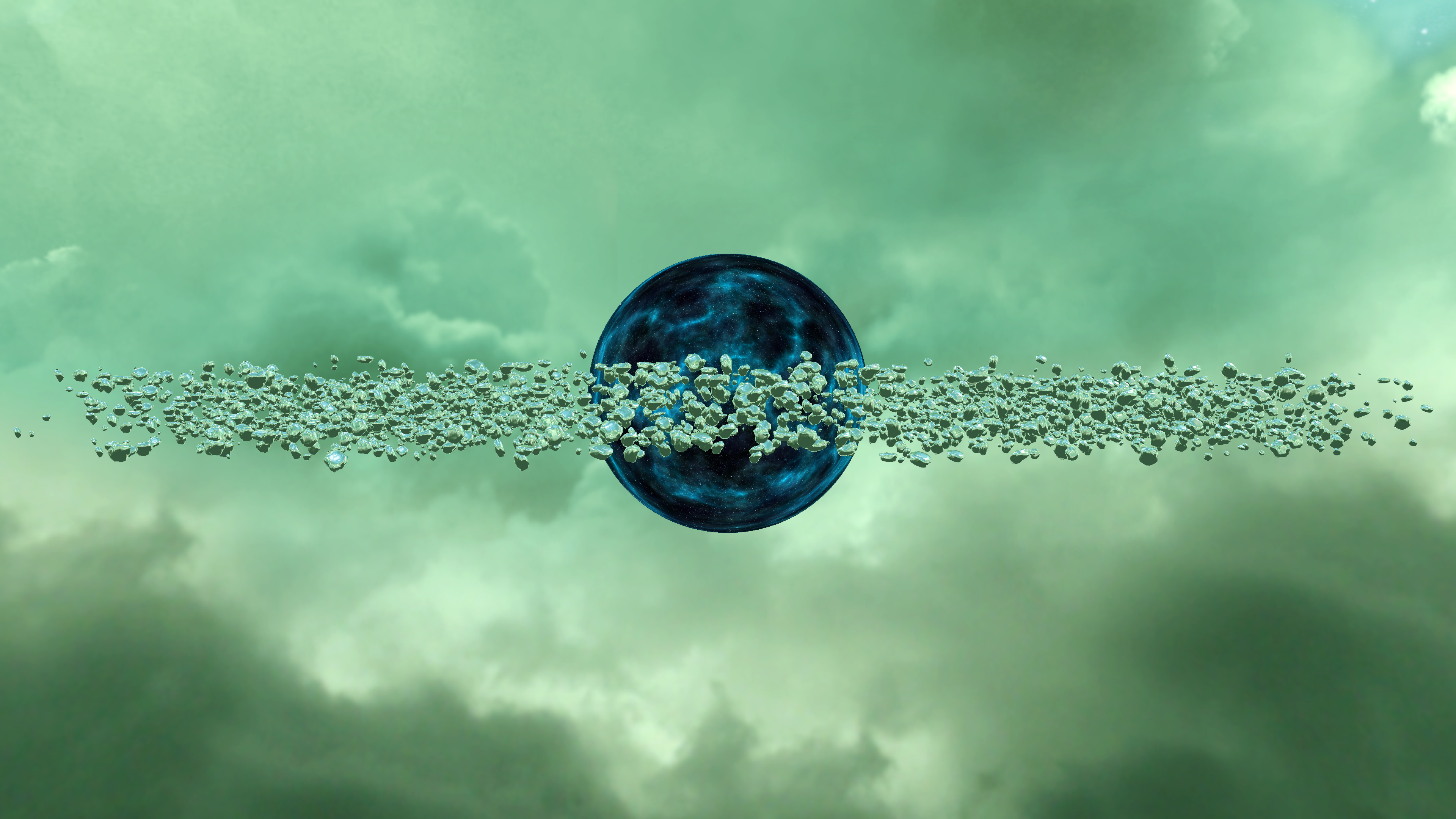
ReflectRefractScene: Instancing of cube objects, use of geometry shader to "blow up" models over time by pushing it's triangles
out in the direction of their surface normals, perfectly reflective cubes that reflect the skybox, geometry shader used to
display surface normals at each vertex, refractive "Starman" model with ability to cycle through various refractive index
values.
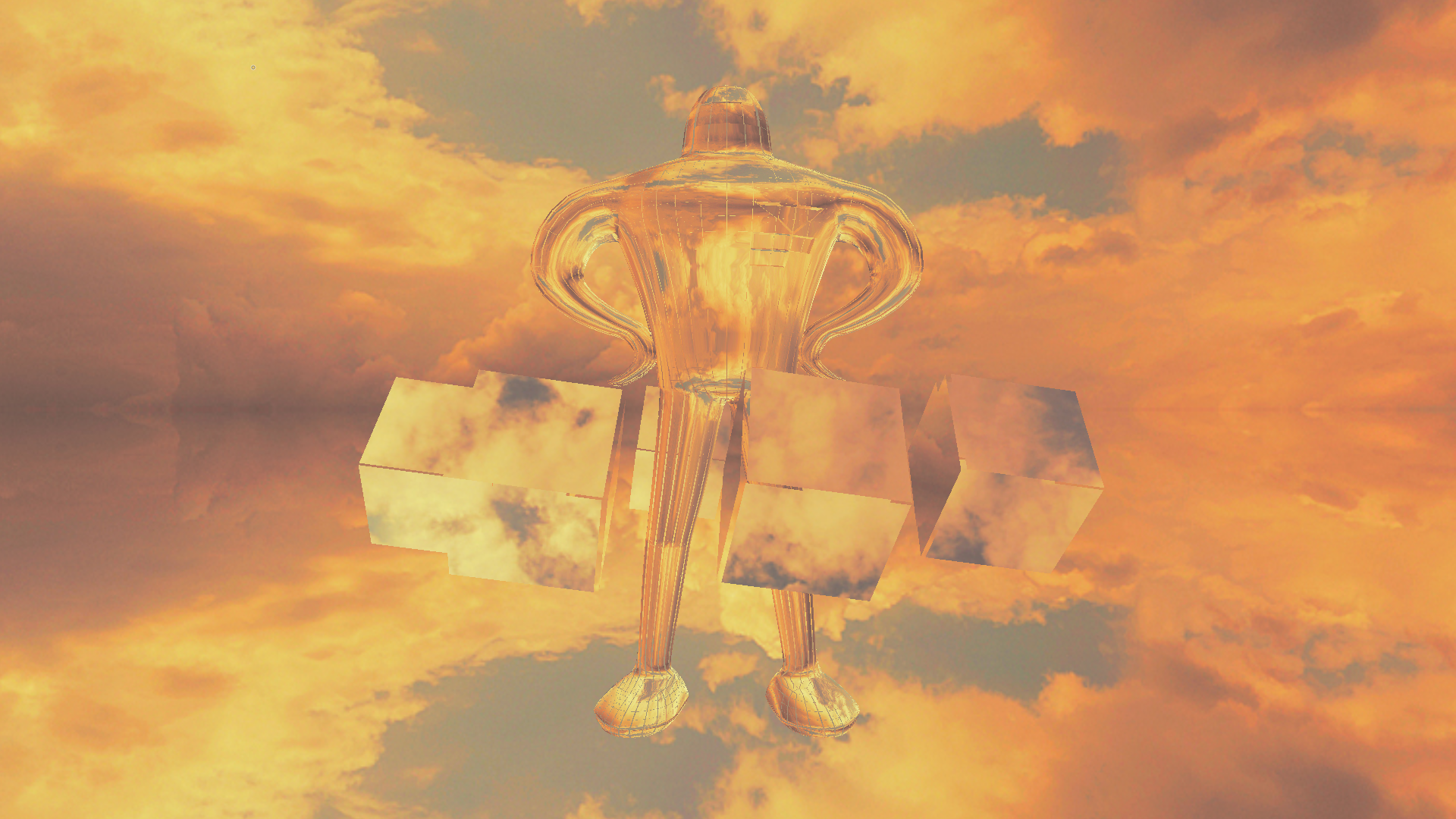
MengerSpongeScene: Deeper exploration of ray marching, fusing the ray marching scene with a rasterized cube by matching the view and
projection values, allowing the cube & ray marching scene to exist in the same space and appropriately occlude each other by
manually writing the depth values through translation of the ray marching hit coordinate to NDC, adjustable super sampling slider that
can be used to take 1 to 8 samples per pixel, rendered to separate framebuffer that allows various resolutions between <120w,68h> to
<3840w,2160h>, shading is simply based on ray marching iterations, uses ray marching boolean operations and scaling operations (with
major help from Inigo Quilez' distance functions article.
This scene also has an associated blog post and ShaderToy.
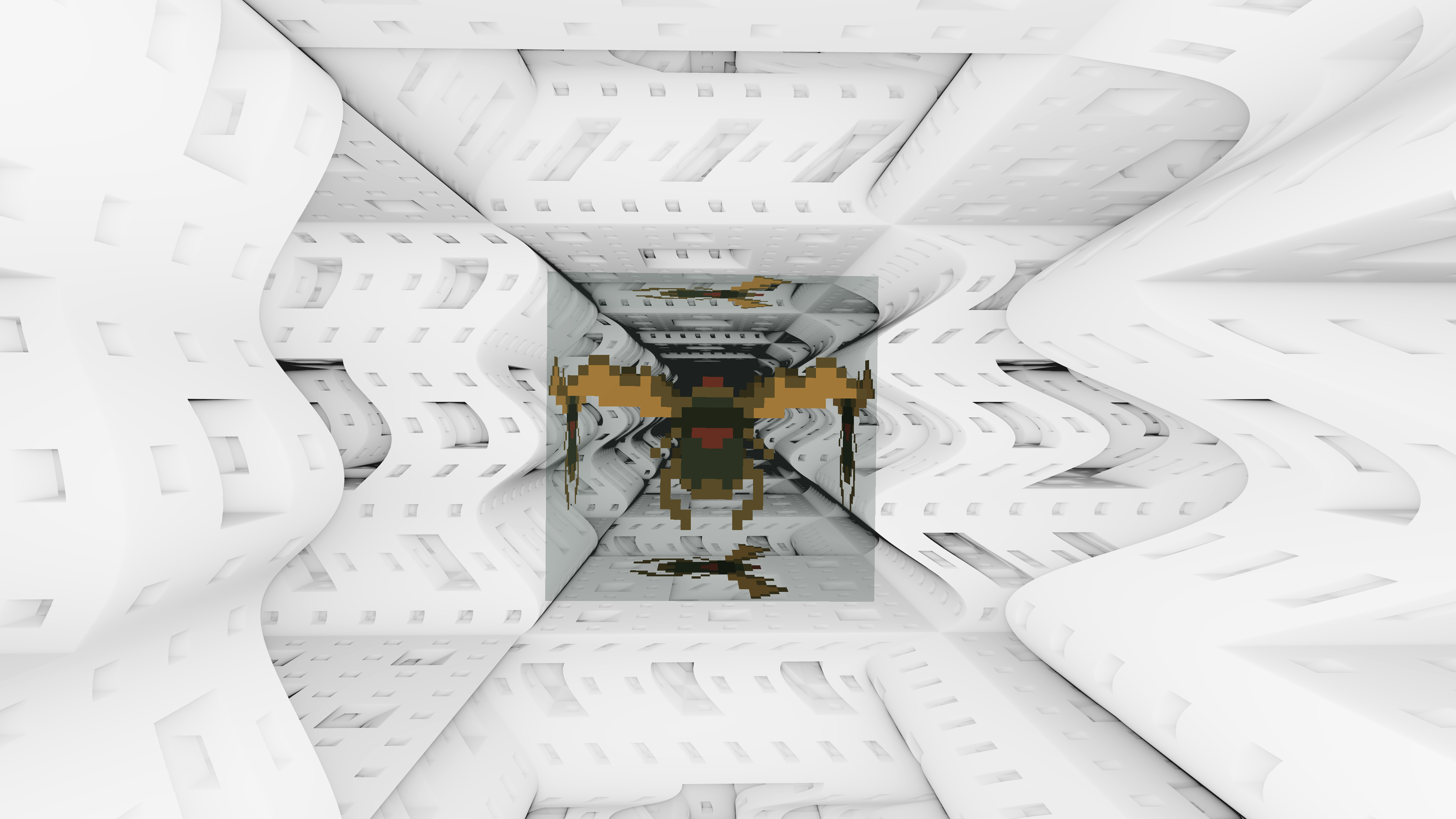
MengerSpongeScene (modified): Fun stuff by throwing some "noise" into the distance field by adjusting the value of the SDF based
on arbitrary sin values. [Although calculating sin values is expensive, the main bog down when running in this in 4K seems to be due
to the unusually large number of iterations of each ray (which, in turn, does require many more sin values to be calculated).]
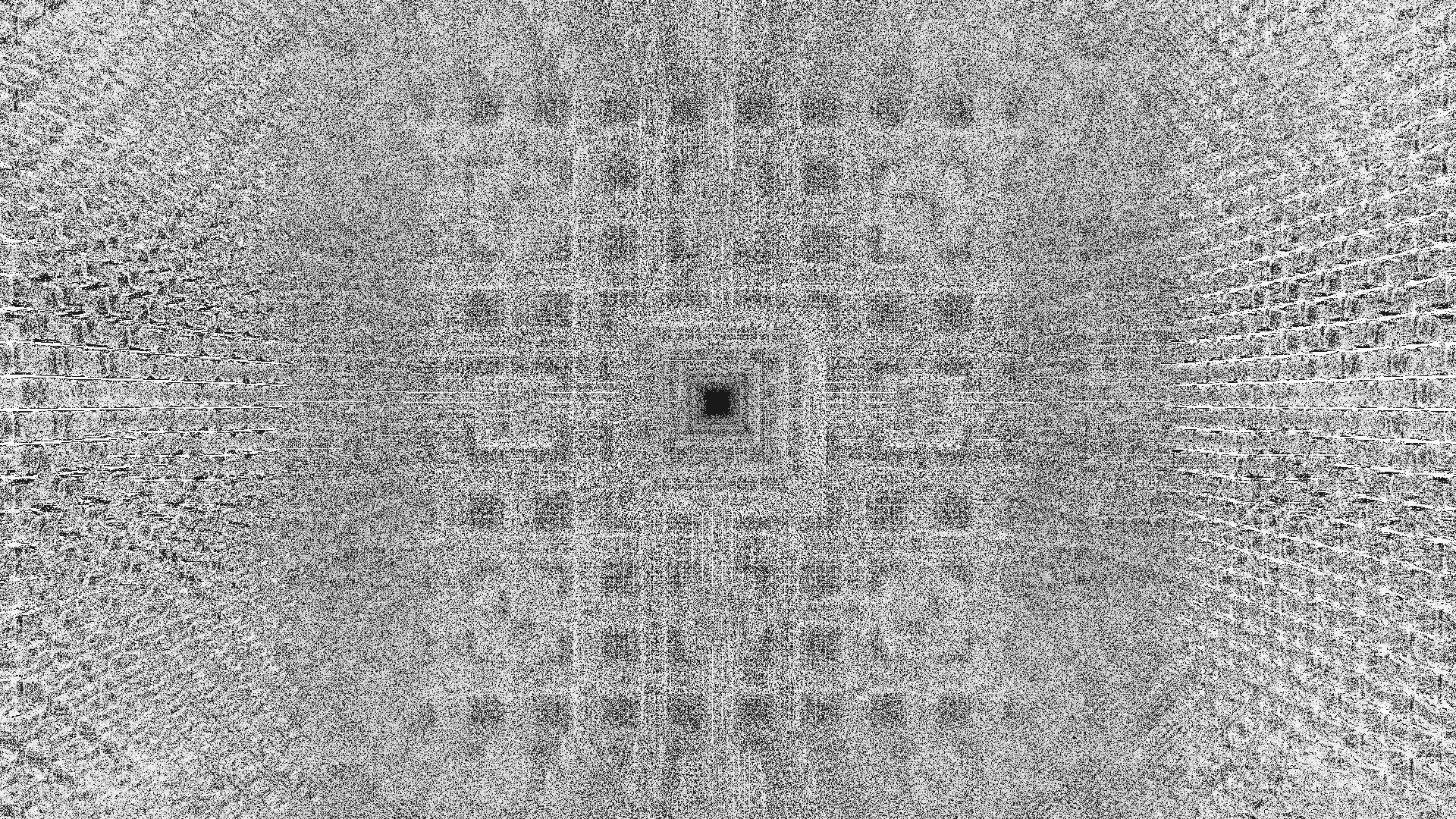
MultiScene: Thanks to the way that the Scenes are structured, four scenes can run at once in real-time, all Scenes still
accepting input from peripherals, with the ability to cycle through all scenes while drawing 4 of them simultaneously, each
scene is rendered with a framebuffer equal to the size of their portion of the window, no hiccups taking FPS below 60 seen on my
personal machine unless it features the MengerSpongeScene rendering at higher resolutions with many samples per pixel.
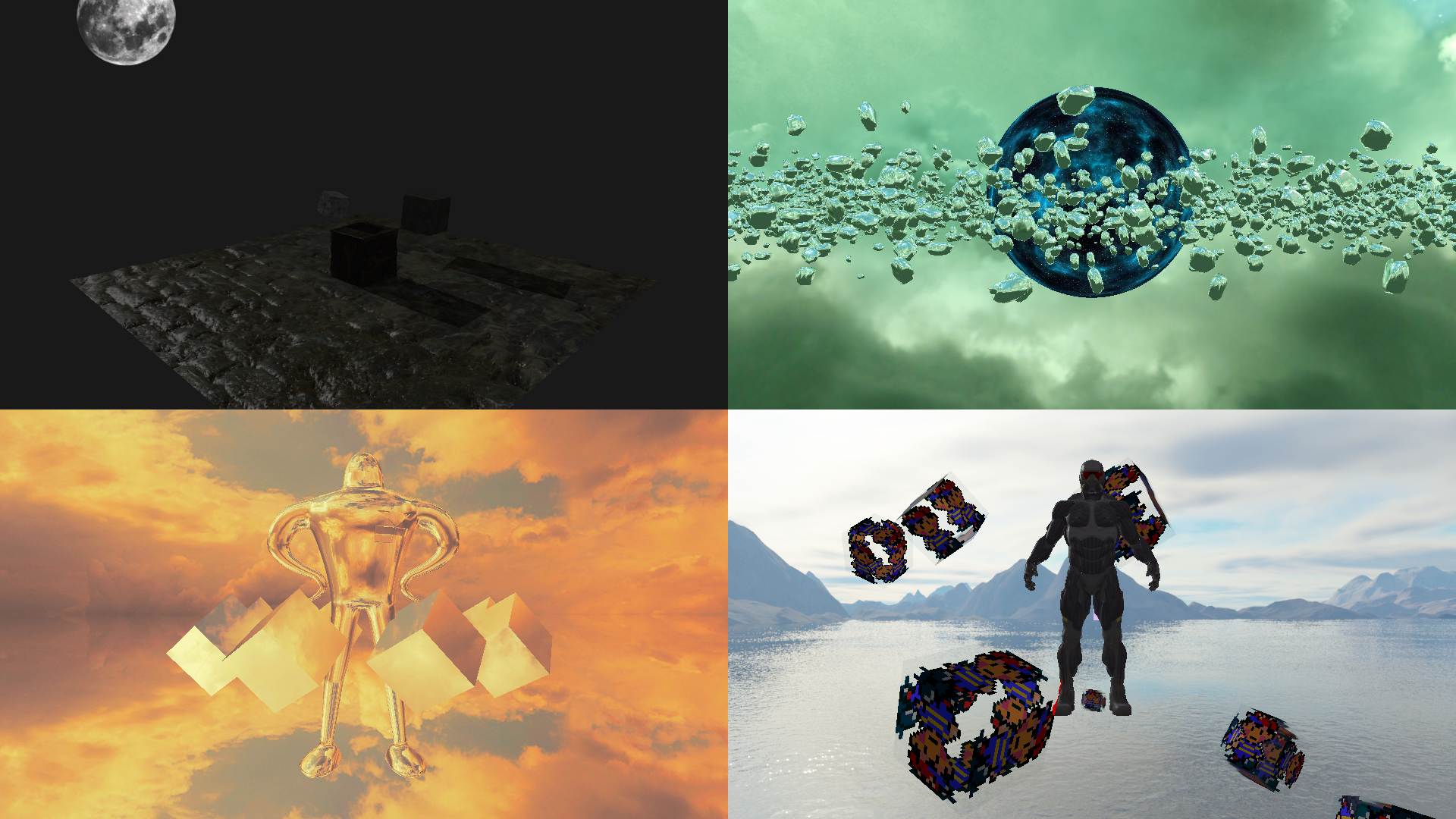
There is also support for switching between "scenes" while the application is running.
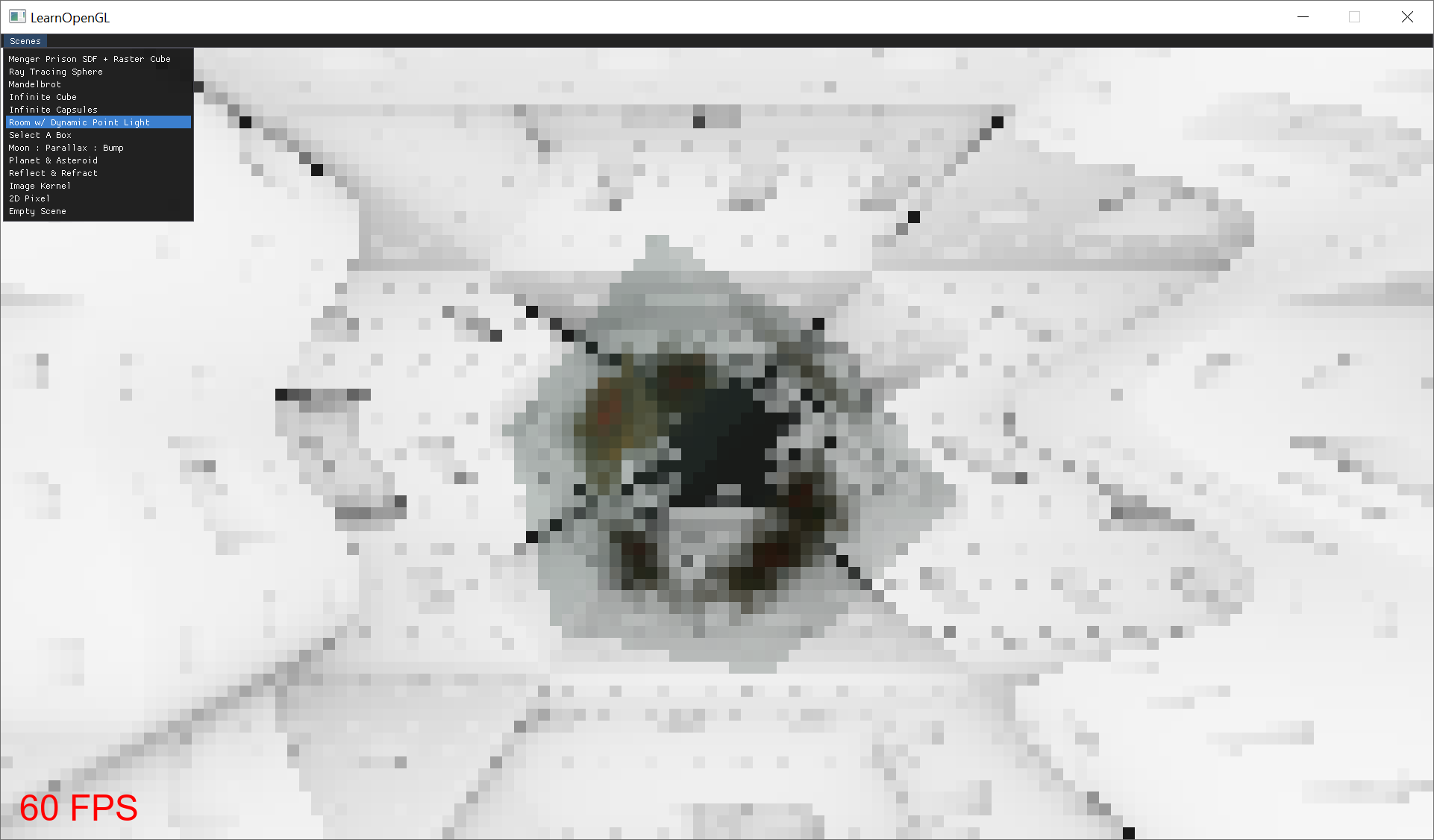
All snapshots are taking through the application with the hot key 'Alt-`', which grabs a Scene's framebuffer returned from Scene::draw() and saves the data to a simple .bmp image file.
Special Thanks
Learning Resources:
Joey de Vries' amazing Learn OpenGL website
Inigo Quilez' fantastic graphics articles
Dependencies:
Dear ImGui, an extremely user friendly imgui library
assimp, for easy loading of .obj files
stb, awesome header-only dependencies (specifically stb_image & stb_truetype)
Art used for this project:
- Skybox Artists - StumpyStrust, CustomMapMakers, Pieter ‘Spiney’ Verhoeve
- Model Artists - ivangeta79, Kyra Anastasia Kabler
- Textures - Free PBR